Keyword: literature
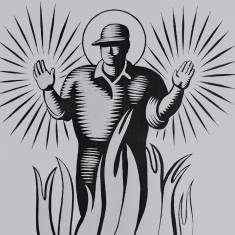
Saint-Aurèle-de-Gifford
This illustration for the short story, “Saint-Aurèle-de-Gifford” by David W. Henderson, was published in the literary magazine, Canadian Forum, in June 1991. The story concerns the conflict between a small town doctor and an unconventional faith healer. Fire, murder and miracles are introduced, though
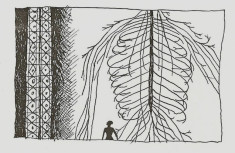
Prufrock: Magic Lantern
This drawing, inspired by T.S. Eliot’s poem, “The Love Song of J. Alfred Prufrock,” illustrates the lines: “It is impossible to say just what I mean! But as if a magic lantern threw the nerves in patterns on a screen …” In a
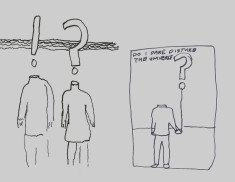
Prufrock: Question
The caption “Do I dare disturb the universe,” is a quotation from T.S. Eliot’s poem, “The Love Song of J. Alfred Prufrock,” published in 1920. The cartoon may also refer to “the overwhelming question” and the narrator’s desire to “wear
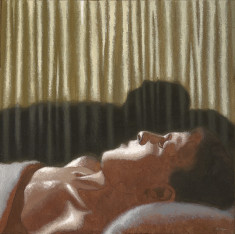
Curtain
Robert had drawn a study of a patient lying before a closed curtain. He showed this drawing to his brother Doug, who suggested adding a second figure glimpsed behind the curtain. Doug was a student of 19th century literature and fascinated
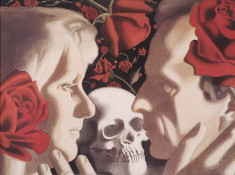
A Seal Upon Thine Heart
This image looks more like the cover of a Gabriel Garcia Marquez novel, detailing the comic labyrinth of human passion, than an example of the deadpan school of Canadian social realism. The image does have a literary connection, one of a series
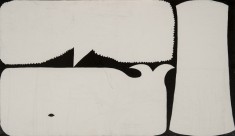
Moby Dick, Hiroshima, Three Mile Island
Robert loved the novel Moby Dick, especially the chapter “The Whiteness of the Whale” in which Melville argues that white is the both the colour of good and the colour of evil. The novel represents an epic chase spanning the
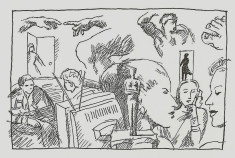
Prufrock
This small cartoon illustrates T.S. Eliot’s poem, “The Love Song of J. Alfred Prufrock.” Robert builds upon the poem’s references to art and the Bible, adding in a television and Hollywood Oscar statuette: the invasion of pop culture into high
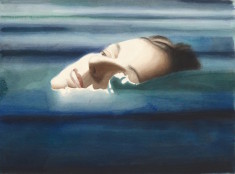
Metamorphosis
Despite the starkly minimal approach, the image has a wealth of associations—from an Ophelia drowning in love to a dream state or awakening consciousness, as well as evoking ideas of baptism and rebirth. The water is both pleasurable and dangerous.